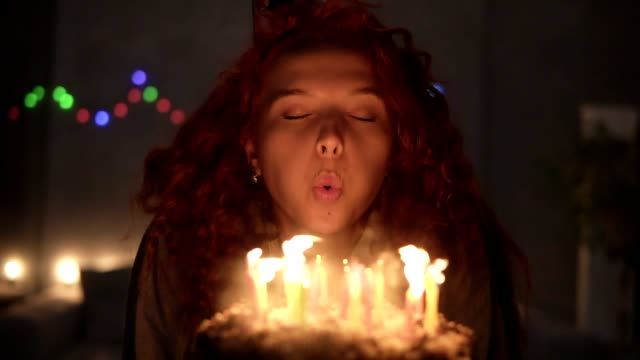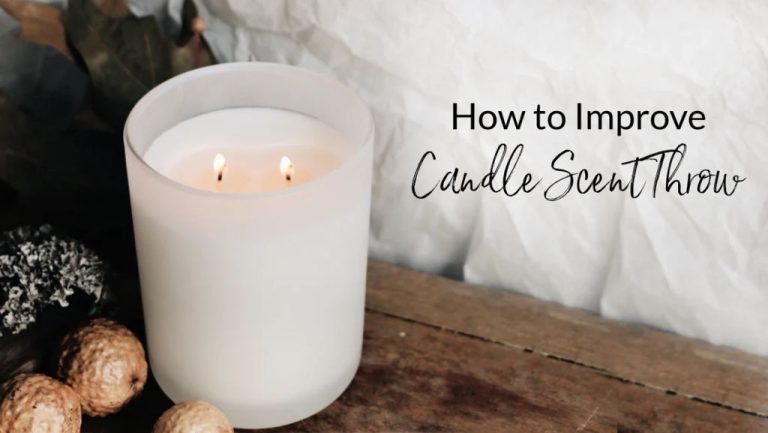What If I Accidentally Left A Candle Burning?
The Dangers of Unattended Candles
Leaving candles unattended can be extremely dangerous due to the risk of fire. According to the U.S. Fire Administration, candles were the cause of an estimated average of 9,300 home fires per year from 2012 to 2016, resulting in 86 deaths, 827 injuries, and $374 million in direct property damage annually (https://apps.usfa.fema.gov/downloads/pdf/statistics/v6i1.pdf). Proper supervision is critically important when burning candles. Many of these fires start because candles were abandoned or left unmonitored.
Some common causes of accidental candle fires include placing candles too close to combustible materials, forgetting to extinguish candles before leaving the room, falling asleep while candles are still burning, or having candles tipped over by children or pets. Any of these situations can allow an open flame to come into contact with rugs, curtains, furniture, books, or other flammable items. A small flame can quickly grow into a deadly fire when left unattended.
It’s crucial to never leave a burning candle unsupervised. Extinguish candles before leaving a room and make sure they are placed on stable, nonflammable surfaces. Adults should closely monitor candles if children or pets are present. With proper precautions, candle fires can be prevented.
Preventing Candle Fires
There are several important steps you can take to help prevent candle fires in your home:
Proper positioning is key. Always place candles on a stable, heat-resistant surface away from anything flammable. According to the National Candle Association, you should keep candles at least 12 inches away from anything that can burn (https://candles.org/fire-safety-candles/). Don’t place candles near furniture, curtains, bedding, paper, flammable decorations or other items that can easily ignite.
Always use appropriate candle holders. Candles should be in a sturdy, fire-resistant container that is big enough to collect dripping wax. Metal, glass or ceramic holders work best. Avoid using containers that can burn like wood or plastic (https://www.puroclean.com/blog/candle-fire-safety-guidelines/).
Don’t burn candles near drafts, vents or air currents. This will help prevent rapid or uneven burning, sooting, and excessive dripping according to the National Candle Association (https://candles.org/fire-safety-candles/).
In summary, always be vigilant about proper positioning, using appropriate non-flammable candle holders, and keeping candles away from drafts and flammable materials or decor to help prevent dangerous candle fires.
If You Discover an Unattended Candle
If you find that a candle has been left burning unattended, you should take immediate steps to extinguish it safely. According to the National Fire Protection Association (NFPA), you should never leave a candle unattended. When discovering an abandoned candle, avoid panicking and approach it carefully.

Use caution in extinguishing the candle – do not blow it out, as that can disperse hot wax. The safest way is to gently place a snuffer or metal lid over the flame to smother it. Make sure the wick has completely gone out before removing the snuffer. If you do not have a snuffer, you can use wet fingers to pinch the wick and extinguish the flame, but be extremely careful not to burn yourself.
After the candle is out, check for any signs of fire or smoldering nearby. Feel around the candle holder and look under it to make sure no hot wax dripped onto the surface below. Also examine any surfaces or materials within 1-2 feet of the candle. Candle fires often start when flammable objects are too close, so identify any risks.
If you see any smoke, burning, or damage caused by the unattended candle, call emergency services immediately. Fires can quickly grow out of control. Otherwise, let the candle holder cool fully before moving or relighting the candle to prevent accidental burns or flare-ups.
Fire Safety Tips
There are several key steps you can take to help prevent fires and keep your home safe, according to the Red Cross. Here are some top fire safety tips:
Install smoke alarms on every level of your home and inside and outside of sleeping areas. Test them monthly and change the batteries at least once a year. Smoke alarms can alert you to a fire even when you are sleeping, giving you precious time to escape [1].
Create and practice an escape plan with two ways out of every room. Make sure windows open easily and that everyone knows where to meet outside. Have an outside meeting place a safe distance from your home [2].
Install fire extinguishers in your home and teach family members how to use them properly. Extinguishers should be placed in key locations like the kitchen, garage and workshop. Check them monthly to ensure they remain charged and recharge them after use [3].
Avoid overloading electrical outlets and switch panels. Do not run extension cords under rugs or anywhere they can be damaged. Check cords for damage before use and replace any with frayed or exposed wiring.
What to Do If a Fire Starts
If a fire does start in your home, your top priority should be to get out safely. The Red Cross recommends the following steps if you discover a fire in your home:
- Don’t panic. Keep a clear head so you can take the proper actions.
- If the fire is small and contained, use a fire extinguisher to try and put it out. Make sure the room is not filling with smoke first.
- If the fire is spreading quickly, evacuate the home immediately. Do not try to save belongings.
- Test doors before opening them by kneeling down and feeling the bottom of the door with the back of your hand. Do not open any doors that feel warm – the fire may be on the other side.
- Crawl low under the smoke to the nearest safe exit. The clearest air will be near the floor.
- Stop, drop to the ground and roll if your clothes catch fire.
- Call 911 from outside the home. Provide the exact address and details about the fire.
- Do not go back inside for any reason until firefighters say it is safe.
As soon as you are in a safe location, call 911 and report the fire. The faster emergency services can respond, the more likely the fire can be contained and lives and property saved (Ready.gov). Stay on the phone for any instructions or updates from the operator.
If anyone has been burned, immediately flush the wound with cool water and remove any clothing or jewelry that may retain heat. Be prepared to administer first aid for burns while waiting for medical help. Wrap burns loosely in sterile dressings and keep the person warm with a blanket. Watch for signs of shock.
Fire Damage and Recovery
Fires can leave behind extensive damage, both from the flames as well as from smoke and water used to put out the fire. Smoke damage in particular can spread throughout a home and be difficult to fully remove.
According to the Red Cross, “Smoke odor and soot can permeate walls, furniture, carpeting, drapes, bedding – virtually anything that absorbs it.” They recommend cleaning surfaces with “household cleaner or soap and water,” opening windows to air out the home, and laundering any linens or fabrics (Red Cross).
However, smoke damage can go beyond what can be cleaned with household products. Restoration professionals have specialized tools and techniques to remove smoke odor and residue from homes. Jenkins Restorations recommends having restoration experts do a thorough evaluation after a fire, as “there may be damage that exists behind walls, under floors, and in hidden areas that you simply cannot see.” They can detect areas that need cleaning or possible demolition and reconstruction (Jenkins Restorations).
Water damage is another common effect of extinguishing a house fire. Drying out the home quickly is important to prevent mold growth. Dehumidifiers, fans, and removing wet drywall or insulation can help mitigate water damage. Depending on the extent of the damage, reconstruction of parts of the home may be necessary.
Working with qualified restoration and reconstruction professionals can help minimize the damage caused by smoke, water, and fire after an incident. They have the proper equipment and training to identify areas needing remediation.
Fire Insurance
When a fire damages or destroys your home, your insurance policy will typically cover rebuilding costs and replacing damaged possessions, as long as the fire was not intentionally set by the policyholder. Make sure to document losses from smoke and fire damage with photographs and lists so you have evidence to submit to your insurance company.
Create an inventory of damaged items and estimate their replacement value when making a claim. Your insurance agent can provide claim forms and explain what types of documentation they need. Keep receipts for any emergency expenses like temporary housing costs that may also be reimbursed.
Work closely with your agent during the claims process if any issues arise. For example, some policies may only cover specific types of candles so check your policy details if your candle caused the fire. Comprehensive insurance coverage is important when using candles regularly in your home.
“According to HK Insurance, insurance companies may deny candle fire claims if the policyholder knew that candle could cause damage.”
Legal Consequences
If you accidentally leave a candle burning unattended and it causes a fire, you can be held legally responsible and liable for any resulting damage or injuries. Leaving a burning candle unattended constitutes negligence, which means failing to act with a reasonable level of care.
In most states, the legal theory of ‘negligence per se’ applies to unattended open flames like candles. This means you are automatically considered negligent if you violate a law or regulation, such as fire safety codes that prohibit leaving burning candles unattended.
If an unattended candle fire causes property damage, the property owner will likely sue you to recover costs like repairs, replacements, hotel stays if the home is uninhabitable, etc. Your renter’s or homeowner’s insurance policy will likely cover these costs if it was truly accidental, but your premiums will likely increase afterwards.
If the fire injures or kills someone, you may be sued and held personally liable for their medical bills, lost wages, pain and suffering, and more. In extreme criminal cases like fatal fires, prosecutors can charge you with negligent homicide or manslaughter.
According to legal experts, it is very difficult to defend against negligence lawsuits for unattended candle fires. Courts recognize this as an obvious and preventable fire hazard. Your best option is preventing unattended candle fires through vigilance and fire safety. But if an accident happens, consult a lawyer immediately about your liability.
Sources:
Safer Alternatives to Candles
While candles can provide lovely ambiance, their open flame poses a fire hazard if left unattended. Thankfully, there are many safer options for achieving the light and fragrance of candles without the risk of fire. Here are some of the top alternatives to consider:
LED candles are a great option to mimic the look of a real flame. LEDs produce no heat, smoke, or fire danger. They come in all shapes and sizes, from tapers to votives to pillars. Some even have timers or remote controls. Pros are safety and longevity, cons are higher upfront cost and less realistic flame effect (Lafco Candles).
Reed diffusers utilize natural rattan reeds to disperse fragrant essential oils into the air. They provide continuous gentle fragrance with no flame. Pros are safety and ease of use, cons are the need to regularly replace reeds and oil (Apartment Therapy).
Essential oil diffusers use ultrasonic technology to disperse scented oil as a fine mist. They offer the benefit of aromatherapy. Pros are safety, health benefits, and long operation time; cons are noise from the ultrasonic vibrations and frequent refilling (La Promeneuse).
Overall, LEDs, reed diffusers, and ultrasonic diffusers provide excellent flame-free options for anyone looking to enjoy candle benefits without the fire risk. Evaluate your priorities between cost, fragrance, light ambiance, and ease of use when selecting the safest candle alternative for your needs.
Summary and Key Takeaways
Accidents can happen, even with the best intentions and planning. If you discover an unattended candle, stay calm and take immediate action to prevent a fire. The key takeaways are:
- Blow out any flames and make sure the wick is no longer burning.
- Feel around the candle and holder to check for heat and ensure no embers remain.
- Consider safer candle alternatives like battery-operated or electric candles.
- Never leave a burning candle unattended or near flammable materials.
- Have working smoke detectors in each room and plan escape routes.
- Keep fire extinguishers easily accessible in case of emergency.
- Practice fire safety at all times – prevention is the best protection.
While accidents happen, we can reduce risks by staying alert, avoiding distraction, and putting safety first. With vigilance and common sense, candle fires can be prevented.



